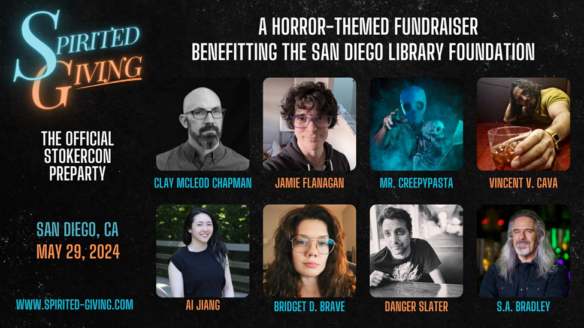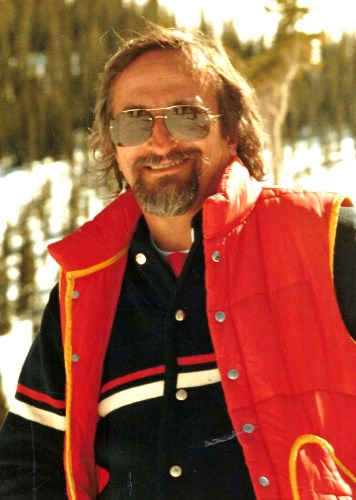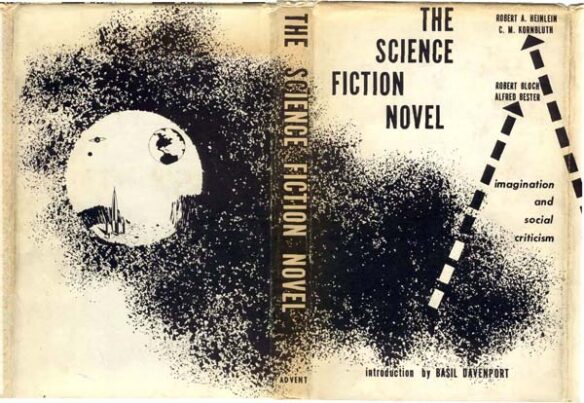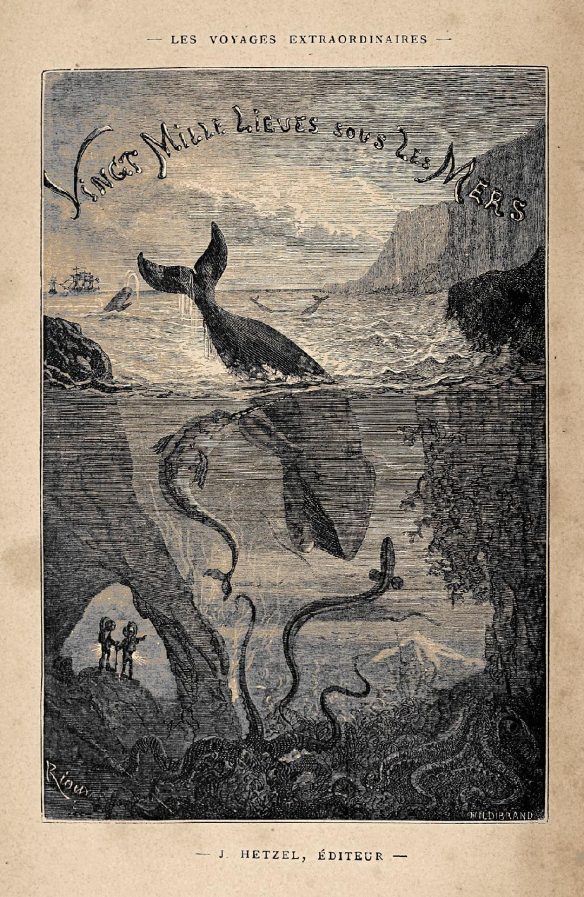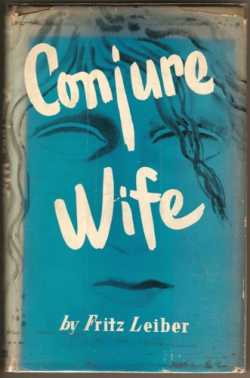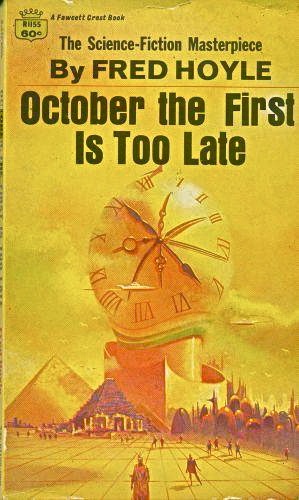(1) THE SHELVES LOOK DIFFERENT THIS WEEK. The Guardian interviews Octavia’s Bookshelf owner Nikki High about how she’s aided her community during the Eaton Fire: “It was a town’s only Black-owned bookstore. It is now a refuge for those displaced by the California fires”.
… That night, the flames ravaged her neighborhood. “There’s about maybe seven or eight homes left on our street, including ours,” she says. The following day, she drove to Octavia’s Bookshelf to see if it was damaged. Although winds blew dirt into the store, her business was otherwise in the clear. In fact, her store still had power and wifi. An idea struck her: perhaps others in the community needed to get online.
“I wrote up something real quick on Instagram,” High says. “I just said, ‘Hey, I have wifi and power. If you need to come here to get online, I’ll be here all day.’” That small act of outreach became the catalyst for something much larger.
As people trickled into the store, they began asking for basic necessities. “Do you have any water?” one person asked. High turned back to Instagram, posting a call for water donations, which she received, plus more. By the end of the day, the bookstore had transformed into a full-fledged relief center.
“We packed up all of our books off the shelves and put them in the attic,” High explains. The books were replaced by the items people gave to victims of the fire. The donations poured in from as far away as Portland, filling the store with supplies like toothpaste, diapers, cat food and water. Volunteers from the community, including loyal customers, stepped in to help organize and distribute the items.
For those who came seeking aid, the store became a place of connection and solace. High remembers one customer who came in for diapers and wipes. “She told me she had donated to our original GoFundMe when we opened. She said, ‘I never thought in a million years I’d be coming here to get supplies after losing my home.’”…
(2) WHEN BUY BY ALMOST WENT BYE-BYE. “Bloomsbury UK Reaches Last-Minute Contract Agreement With Amazon” reports Publishers Weekly.
Charging that Bloomsbury UK failed to engage in good faith to reach a new contract agreement, Amazon posted a notice on its UK website late Thursday afternoon that as of midnight January 24, Bloomsbury UK print titles would no longer be available directly from its online stores in the U.K., Europe, and Australia. That takedown was averted, however, when the two parties reached an agreement in principle on a new contract 90 minutes before the last one expired.
In the initial announcement, Amazon stressed that Bloomsbury print book availability in Amazon’s U.S. store would have been unaffected by the action, but that its Bloomsbury’s Kindle editions would not be available for sale worldwide. According to the post, Bloomsbury UK’s agreement with Amazon expired last year, and the e-tailer had extended the deal for about seven months in hopes of reaching a new agreement.
The last extension ended at midnight on Jan. 24, and if no new contract had been signed by then, Amazon would have begun to pull its “buy buttons” from impacted countries. Customers would still be able to buy Bloomsbury titles from third-party sellers who use Amazon’s services. In practical terms, the dispute meant that, for example, Sarah J. Maas titles that are published by Bloomsbury UK would not have been available in affected stores, while Maas titles released by Bloomsbury’s U.S. subsidiary will still be available in the American Amazon store….
(3) WE HAVE HEARD THE CHIMES AT MIDNIGHT. “Thousands of romantasy fans make midnight dates with new Rebecca Yarros novel” and the Guardian cheers them on.
Rebecca Yarros couldn’t sell her first novel. No publisher would take it. But this week, 14 years later, legions of her devoted readers turned up to more than a thousand midnight-release parties held to celebrate the publication of her latest book.
In the UK alone, more than 180,000 copies of Onyx Storm, the third instalment of Yarros’s blockbuster Empyrean series, sold on day one of publication on Tuesday. Nearly 60 Waterstones branches held late-night parties or opened early on Tuesday morning to mark the occasion. And after some TikTok users posted videos showing that they had managed to buy the book in Asda ahead of its official release, other fans filmed themselves scouring their local branches trying to get their hands on early copies too.Along with Sarah J Maas, Yarros is at the forefront of the romantasy genre, writing stories that combine elements of fantasy and romance. The first two books of the Empyrean series, Fourth Wing and Iron Flame, follow 20-year-old Violet Sorrengail as she makes her way through dragon-rider training at Basgiath War College. Her enemies-to-lovers romance with Xaden Riorson is central to the story, and in the third instalment, her mission is to save him….
(4) KERFUFFLE IN BLAKE’S 7 FANDOM. Lena Barkin dives deep into “The War That Almost Broke a Classic Fandom” at Fansplaining — Blake’s 7 fandom to be precise.
…Media cons were new and fundamentally different because of screen divide. Literary fans were used to writers being fandom participants at cons—and assumed that’s why actors went, too. One Blake’s 7 fan postulated, “Isaac Asimov and Andre Norton go to cons because they love Science Fiction… These people, and many like them, do not charge fees for attending cons… Mostly they go for many of the same reasons we all have … to get feedback on their work; to have a chance to get on a podium and panel and sound off on favorite issues; to browse in the dealers’ room and art show; to discuss elements of SF into the wee hours; to party!”
While fans could only speculate on the true motivations of the actors, the behaviors described were observed and accepted as standard. It’s also true that many successful sci-fi writers had risen up through the community, supporting this fan’s assertion that these writers “are a part of science fiction.” Science fiction literary fandom was like a really devoted writer’s group where successful writers could give back to the community that helped form them.
But the entertainment industry had long had different ideas about the roles of its stars. From the beginning of Hollywood, female fans were instructed on how to idolize actors. In her book Movie Crazy: Fans, Stars, and the Cult of Celebrity, Samantha Barras posits that, “just as fans sometimes controlled Hollywood, Hollywood also controlled fans.” By redirecting ‘movie-struck’ girls from aspiration to emulation, Hollywood told fans how they could dress like the stars and collect autographs, but weren’t allowed to be stars. The divide between actor and fan had to be strict in order to maintain control of persona and image….
I was struck by the effort here to contrast media cons with the fandom of written science fiction in the Eighties. Barkin uncritically embraces the latter’s (written sf fandom’s) view of itself despite that being a wild oversimplification. Which I know because in the late Eighties that was the myth I believed until I had the experience of setting up the program for NolaCon II (1988) and talked to a bunch of writers who did not feel connected to fandom in that way, who were only entertaining the idea of attending the con because their agent urged them to for business reasons. Asimov’s and Norton’s and some others’ connection with fans was merely part of a wide spectrum of writers’ attitudes towards fandom.
(5) CARD SHARKS. But you don’t need to reach any farther back in time than a week ago if you’re looking for a fan kerfuffle. And there’s video of this one. “Fight breaks out over Pokémon cards at a Los Angeles Costco” reports the LA Times (behind a paywall).
A fight broke out at a Costco store in Los Angeles over Pokémon cards, according to a video circulating on social media.
The fight was captured at the Atwater Village Costco on Jan. 16, according to a video posted on X by DisguisedToast.
Wild footage captured shoppers at the Atwater Village Costco in Los Angeles fighting over large quantities of the coveted Pokémon cards on Jan. 16.
Two men fought over a Pokémon box set, with one of them elbowing the other in the face.
“Get the f— off of me bro,” one of the men said.
Police weren’t called to the scene and aren’t investigating the brawl, Los Angeles Police Department officials said….
(6) 31 FLAVOR. LA Times critic Robert Lloyd says it’s a matter of taste in “’Star Trek: Section 31 review: A diverting but frustrating first TV film” (behind a paywall).
… Originally conceived as a spinoff series from “Star Trek: Discovery” to star Michelle Yeoh as Philippa Georgiou, an agent of Starfleet’s secret black ops arm, the project was downgraded or promoted to a “feature,” officially the 14th in the “Star Trek” canon, and the franchise’s first “TV movie.” Even though this decision apparently preceded production, most everything about “Section 31” says “pilot episode,” as if whatever ideas informed the aborted series were still driving the starship, as characters are positioned for episodes yet to come — as if the film did not want to let go of the possibility of being a TV show…
… The backstory, which will drive the later plot, is meant to make her character tragic, but we came to know her well enough during her time on the starship Discovery, living among nice people, which had softened her considerably. She was practically lovable by the time she walked into that portal.
Perhaps you will be surprised, then, to find Georgiou sliding back into what looks like narcissism, running her version of Rick’s Cafe Américain in the borderlands outside Federation Space back in the 23rd century, using the alias Madame du Franc (and speaking a little French). Introductory narration, as at the start of a “Mission: Impossible” episode — an acknowledged inspiration — tells us that after her return from the 32nd century to 2257 she joined Section 31 for a time and then went missing. How this lines up with Georgiou having already been introduced as an agent of Section 31 in the second season of “Discovery,” which is to say, the agency she’s going back into the past to join, I’m not at all sure. Time travel will break your brain if you let it….
(7) CHILDREN OF THE SURVIVORS. Rich Horton introduces us to a new novel by a well-known fan: “Review: In Memoriam: A Novel of the Terran Diaspora, by Fred Lerner”
…It’s narrated by David Bernstein. As the novel opens, he’s finishing his final year of school before going to college. And he’s attending a performance staged by the alien race that is native to the planet on which he lives. We learn quickly that these aliens, the Wyneri, rescued the survivors of the Cataclysm, which wiped out humanity on Earth, a couple of centuries prior to this story. The couple of thousand who were rescued have been fruitful enough that the human population is about 30,000 — living in small chapters embedded among the Wyneri. The humans have been gifted one island, on which they have built a University, and to which they go once each year for the Ingathering. And this Remnant, as they style themselves, devote themselves to preserving as much knowledge of Terran history and culture as they can….
(8) TODAY’S BIRTHDAY.
[Written by Paul Weimer.]
January 24, 1911 — C. L. Moore. (Died 1987.)
By Paul Weimer: A giant of the 1930’s and 1940’s science fiction and fantasy, I came across C L Moore’s work thanks to Heinlein. It was the early 1980’s and I read Number of the Beast (which weirdly was one of the first Heinlein books I read, which might explain some things about me…). Anyway, early on in the book, Deity offers her collection of pulp magazines to Zeb…and mentions Moore and her characters Jirel of Joiry and Northwest Smith by name. Young brain went “Who are THEY?” (I did that a lot with Heinlein, it’s how I discovered artists like Maxwell Parrish and Rodin.) I found Jirel of Joiry in a collection of the protagonist’s stories. Northwest Smith came, later, in a variety of anthologies of early science fiction.
And I was off and running. Passionate, cerebral and very strongly defined characters in often amazing environments were what I associated with Moore’s work. Sure, a pulp writer, but Moore’s work was uplifted by the interior lives of her characters (consider the agony and the conflict inside of Jirel’s heart, just as one example of her writing at work).

When Moore met and started collaborating with Henry Kuttner, figuring out what pieces were hers, what was his and what were collaborations becomes a morass to untangle. I highly enjoy those stories, but they are really “all” collaborations in my mind.
My favorite Moore works are two of her collaborations with her husband, and they are much more contemporary in her science fiction. “Mimsy Were the Borogoves” I had had the good luck to have read after reading Carroll, so I got the references and allusions immediately, and understood the weird time traveling nature of the futuristic kit and what it did to the child protagonists–and what it almost did decades earlier. It was a “whoa” moment of the power of not time travel of people, but of objects that affect history and people, and literature.
The other story is “Vintage Season”, and it is one of the dagger-to-the-heart endings and the sheer indifference that time travelers can have to the problems of people they visit in the past. When ST: TNG had a protagonist who purported to be from the future act like he was one of the “Vintage Season” time travelers, something clicked and I understood both the original story and the episode much better. I also recently recounted the bit that the time travelers were off next to see Charlemagne in the year 800 to a medievalist friend of mine who is SF adjacent. He was much amused by the idea.
What a talent, in singular and in combination with Kuttner!
(9) COMICS SECTION.
- Non Sequitur sees a sign.
- Thatababy recommends a cookie brand we need.
- Dinosaur Comics predicts the future of sf.
(10) PAYING THEIR RESPECTS. Los Angeles Magazine takes us “Inside the David Lynch Shrine at Bob’s Big Boy”.
Shortly after the family of filmmaker David Lynch announced his death last Thursday morning, fans began gathering at Bob’s Big Boy in Burbank. Hundreds of them left something behind as a huge shrine to the visionary behind Blue Velvet and Mulholland Drive took shape at the feet of the Big Boy statue on Riverside Drive.
As the tributes continued to pour in, the installation was being disassembled Wednesday afternoon by archivist and historian Kat Fox, who wrote her UCLA thesis on roadside shrines and spontaneous memorializations. Fox has previously studied temporary monuments to people lost from COVID, AIDS and 9/11. “Lynch doesn’t have a star on the Walk of Fame which is where these often crop up,” Fox said. “I’m very interested in the way L.A. chooses to memorialize and the way the community comes together in a place like Bob’s that has larger connections to the movie and TV industry,” she said. “It’s a cultural cornerstone and part of David Lynch lore.”
The landmark restaurant was a longtime favorite of the acclaimed director, who had a fondness for the lost world of 1950s Americana, and where he wrote and found inspiration. “I went there every day for seven years,” the director remarked after a film screening. “I would write on the napkins. It was like having a desk. You need paper and there’s a piece of paper and you write on it when you get ideas.”…
… Original drawings and paintings, poetry, and personal letters were mixed in with stuffed logs, real logs, donuts, Cheetos and keys to the hotel where special agent Dale Cooper stayed in Twin Peaks. “There’s half-drunk coffee and half-smoked cigarettes,” Fox said. “It’s like they’re sharing it with him.” An estimated 400 cigarettes, 45 cups of coffee, and dozens of donuts and pie slices were accessioned, documented and photographed before finding their way to the Dumpster….
(11) DID DEFERENTIAL EPISTEMOLOGY LEAVE WITH THE ENTWIVES? [Item by Steven French.] In this Physics World essay, historian of physics and philosopher Robert P Crease argues that the best way to counter misinformation is to be even more melodramatic: “Why telling bigger stories is the only way to counter misinformation”.
If aliens came to Earth and tried to work out how we earthlings make sense of our world, they’d surely conclude that we take information and slot it into pre-existing stories – some true, some false, some bizarre. Ominously, these aliens would be correct. You don’t need to ask earthling philosophers, just look around….
…Humans gain a sense of what’s happening in several ways. Three of them, to use philosophical language, are deferential, civic and melodramatic epistemology.
In “deferential epistemology”, citizens habitually take the word of experts and institutions about things like the dangers of x picocuries and exposures of y millirems. In his 1624 book New Atlantis, the philosopher Francis Bacon famously crafted a fictional portrait of an island society where deferential epistemology rules and people instinctively trust the scientific infrastructure.
We may think this is how people ought to behave. But Bacon, who was also a politician, understood that deference to experts is not automatic and requires constantly curating the public face of the scientific infrastructure. Earthlings haven’t seen deferential epistemology in a while.
“Civic epistemology”, meanwhile, is how people acquire knowledge in the absence of that curation. Such people don’t necessarily reject experts but hear their voices alongside many others claiming to know best how to pursue our interests and values. Civic epistemology is when we negotiate daily life not by first consulting scientists but by pursuing our concerns with a mix of habit, trust, experience and friendly advice.
We sometimes don’t, in fact, take scientific advice when it collides with how we already behave; we may smoke or drink, for instance, despite warnings not to. Or we might seek guidance from non-scientists about things like the harms of radiation.
Finally, what I call “melodramatic epistemology” draws on the word “melodrama”, a genre of theatre involving extreme plots, obvious villains, emotional appeal, sensational language, and moral outrage (the 1939 film Gone with the Wind comes to mind)….
(12) VIDEO GAME BUSINESS. The Guardian asks “Can Assassin’s Creed Shadows save Ubisoft?”
It’s no secret that the video game industry is struggling. The last two years have seen more than 25,000 redundancies and more than 40 studio closures. Thanks to game development’s spiralling costs (blockbuster titles now cost hundreds of millions to make), overinvestment during the Covid-19 pandemic, and a series of failed bets to create the next money-printing “forever game”, the pressure for blockbuster games to succeed is now higher than ever.
It’s a predicament that feels especially pertinent for Ubisoft. Employing in the region of 20,000 people across 45 studios in 30 countries, its most recent big licensed games Avatar: Frontiers of Pandora and Star Wars Outlaws underperformed commercially. It has had two expensive, failed live-service experiments in the past year, Skull and Bones and X-Defiant. With Ubisoft share prices plummeting and investment partners circling like sharks, rarely have the fortunes of a massive games company relied so heavily on a single release. It has already been delayed multiple times, to ensure its quality.
Against this gloomy backdrop, I find myself roaming the glistening halls of Ubisoft Quebec for the world’s first hands-on of Assassin’s Creed: Shadows. The company’s series of historical action games is back after a two-year break, and this time it takes us to feudal Japan. This has been the most requested setting by fans, according to creative director Jonathan Dumont, but ironically some of those purported fans have turned on Ubisoft over the course of this game’s development….
[Thanks to John King Tarpinian, Chris Barkley, Cat Eldridge, Ersatz Culture, SF Concatenation’s Jonathan Cowie, Steven French, Kathy Sullivan, Teddy Harvia, Mike Kennedy, and Andrew Porter for some of these stories. Title credit belongs to File 770 contributing editor of the day Randall M.]


